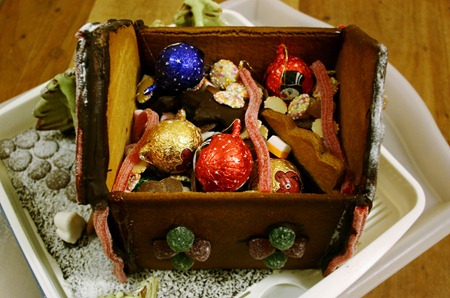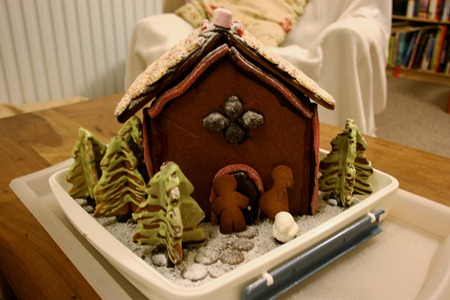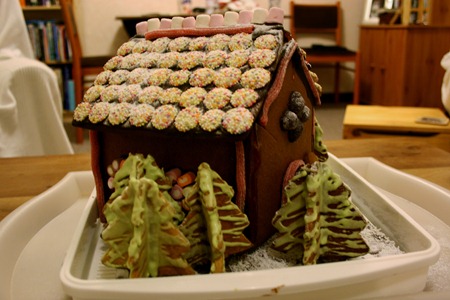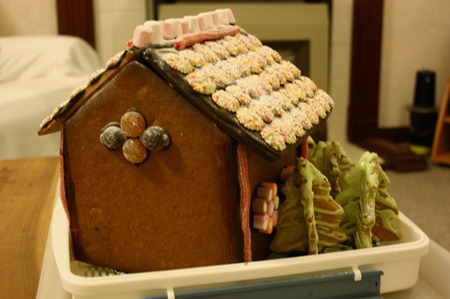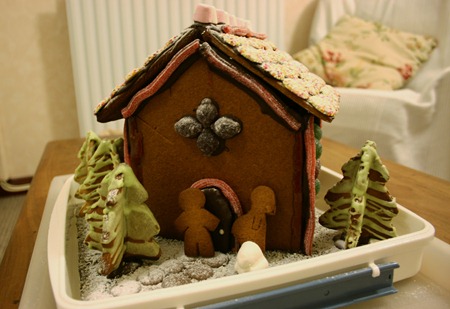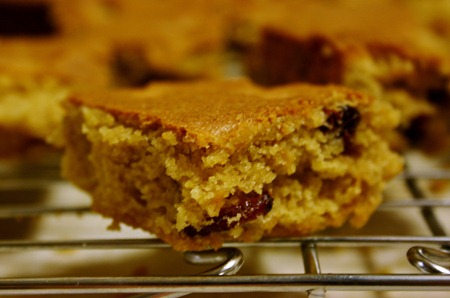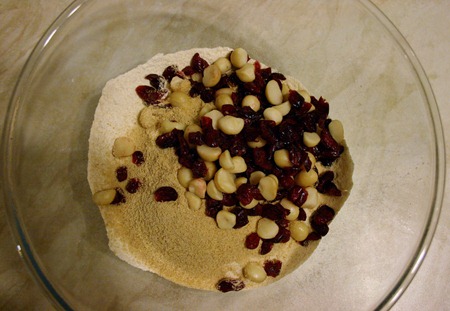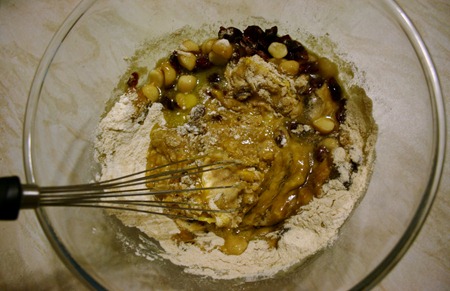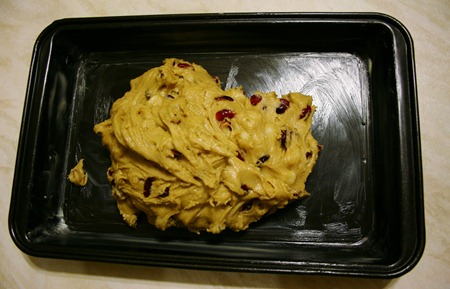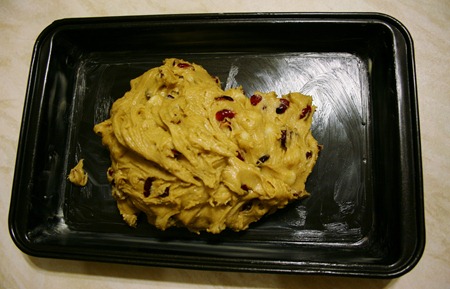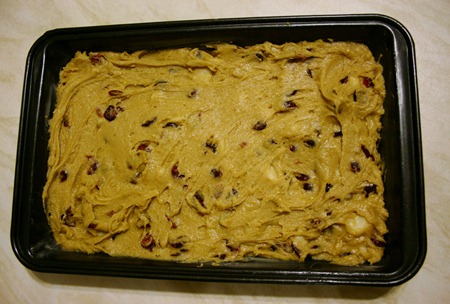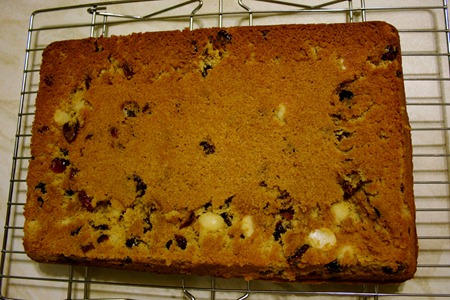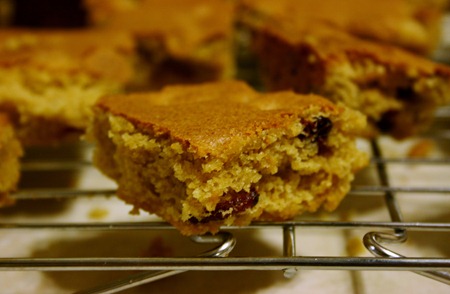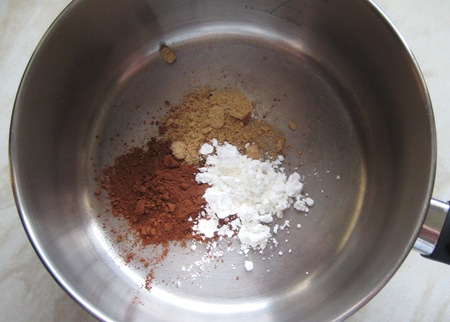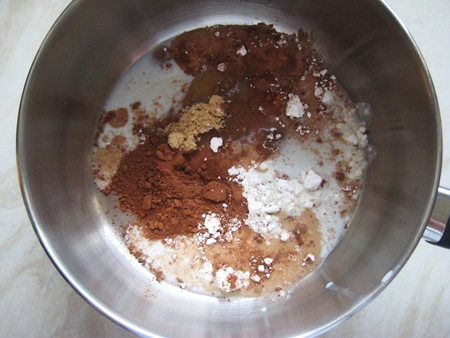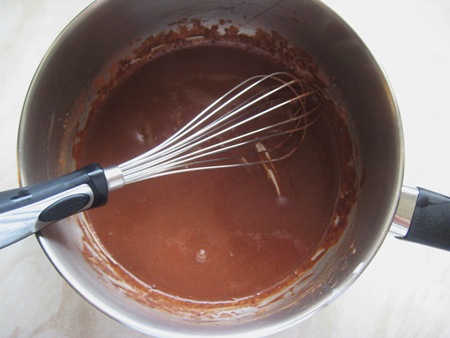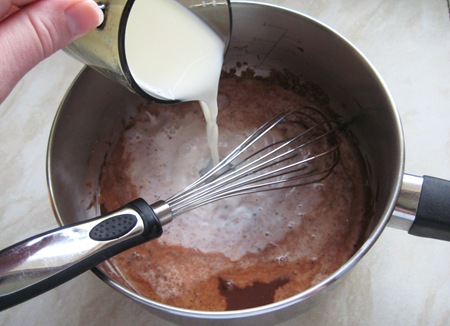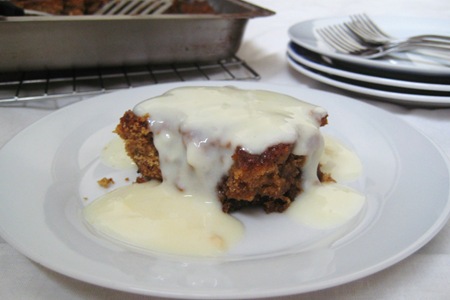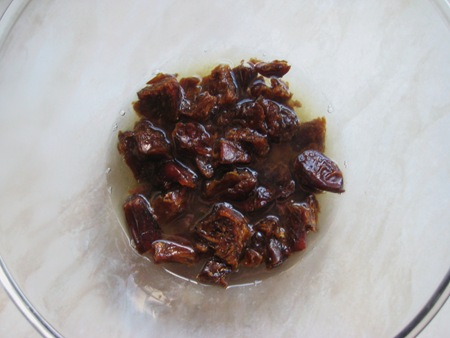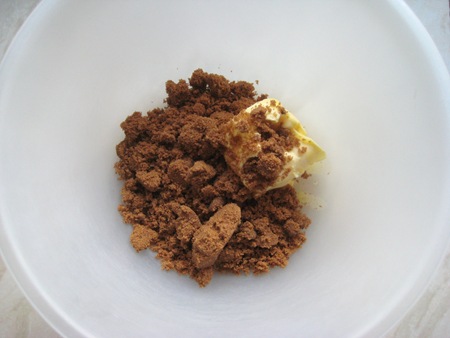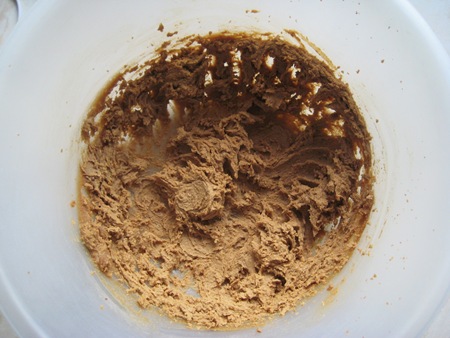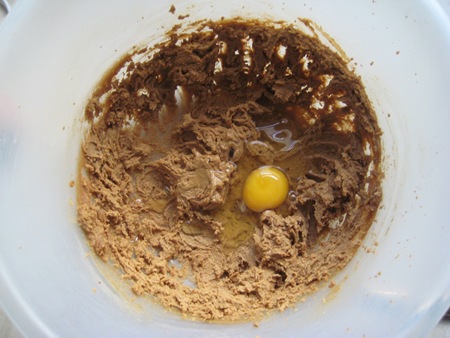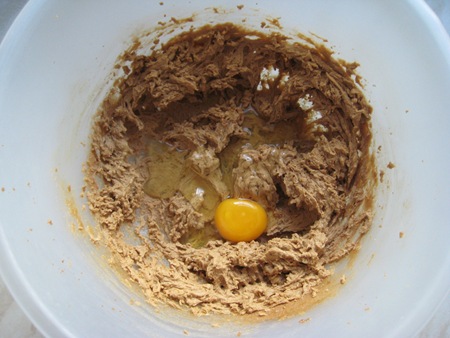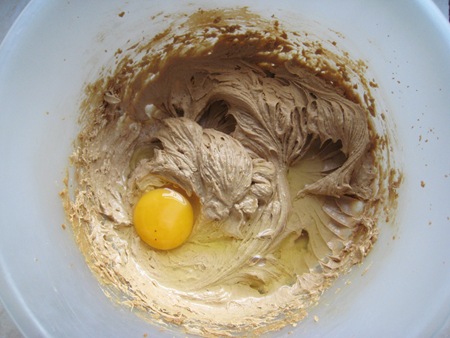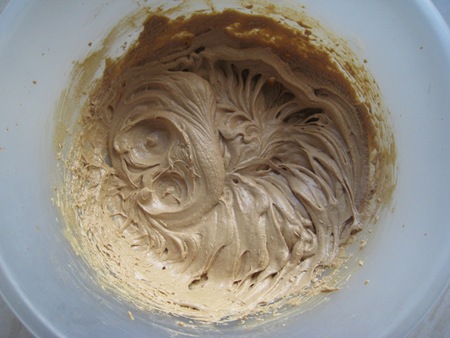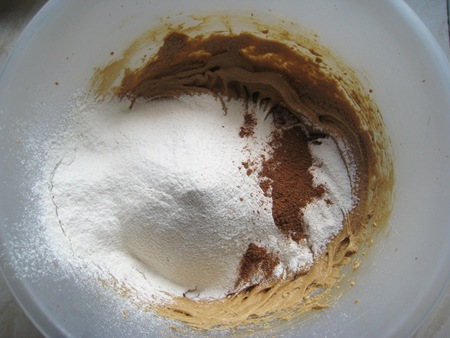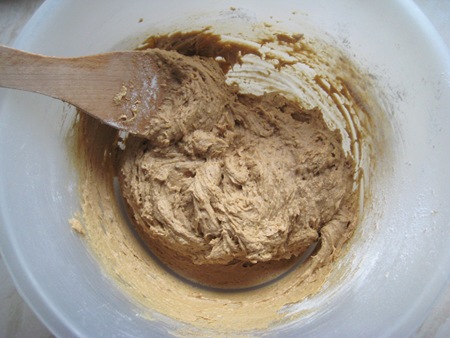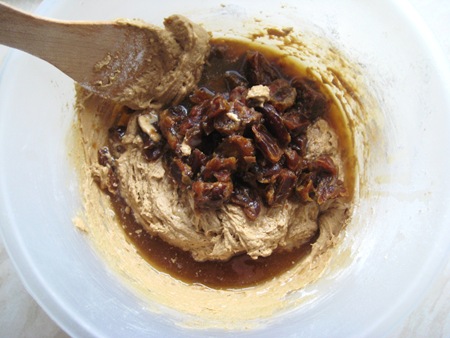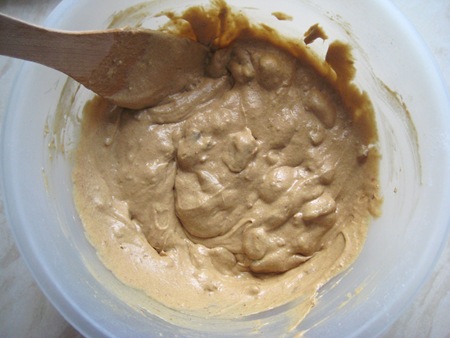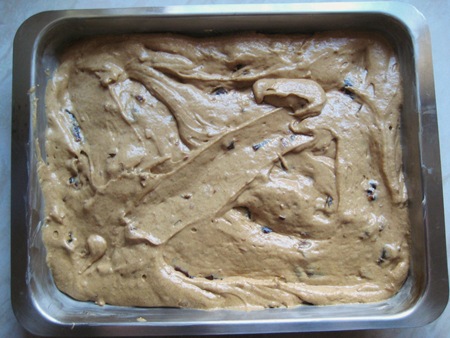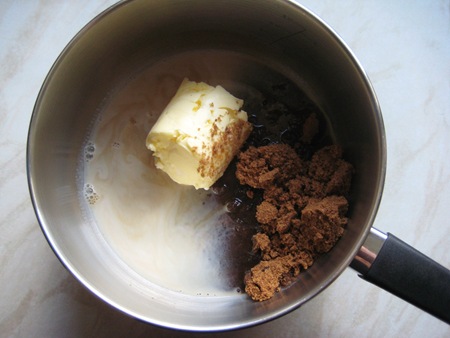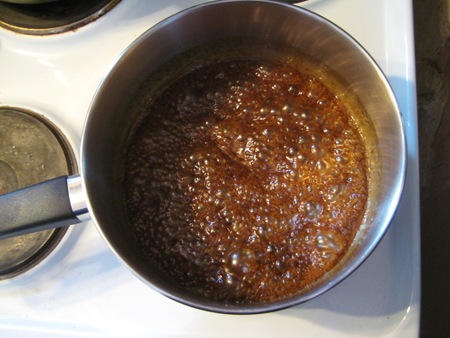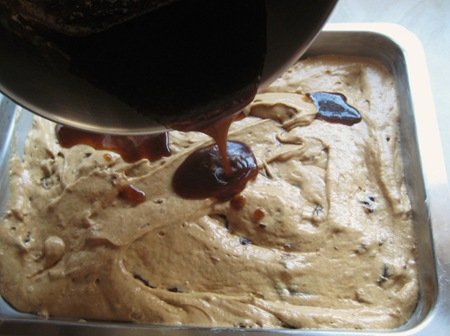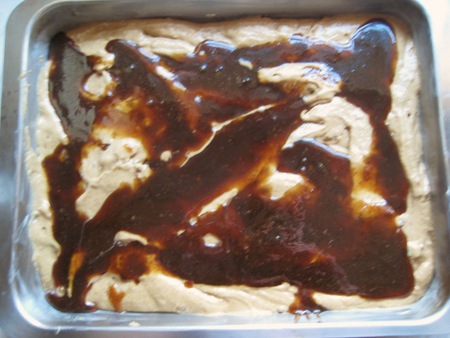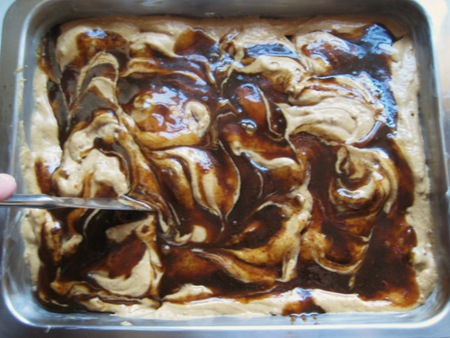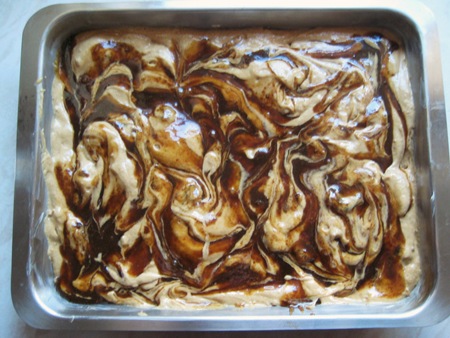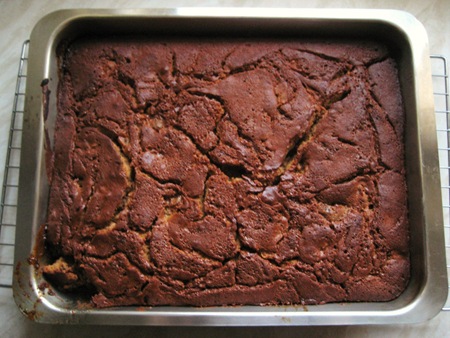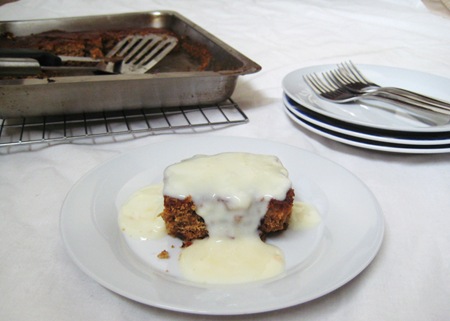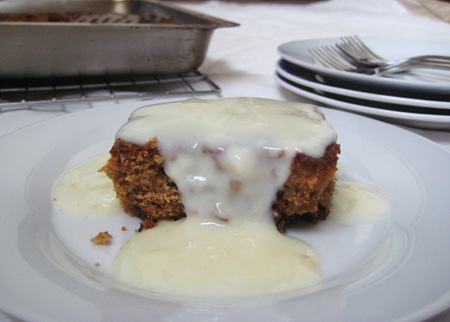On Friday, J and I went to our first Christmas ‘do’ of the season (I say that like we have a jam-packed calendar of festivities – we don’t…) and were asked to take along a Christmas-themed dessert. I knew someone else would be taking along a cake as part of a surprise birthday celebration for another someone else also attending and so did not want to take a cake-y dessert. However, I am also aware that whilst I LOVE christmas pudding, not everyone shares that love – in fact many don’t. I pondered the problem of what to take for a few days when finally inspiration struck one evening as I was dropping off to sleep – a gingerbread house would not only be fun for me to make but would also provide a perfect receptacle for a variety of sweets that would complement the birthday cake without competing for tummy space. This gingerbread house was a collaborative effort – J was employed to calculate dimensions and cut the dough. He also, as you’ll see in the photos, got extra creative and made little figurines of us (which didn’t get to go to the party).
Unfortunately, I did not take step by step photos as I made this, but I have copied the recipe below the photos, in case you’re inspired to try your own hand at a gingerbread house. And if you are, I’d say go for it, but do make sure you set aside a good few hours to enjoy decorating the house…
Gingerbread House Recipe
This recipe makes enough dough for a house whose two side walls measure 15 cm long by 12 cm high, with two roof slats, each measuring 12 cm by 17 cm. The end walls measured 15 cm wide by 12 cm high at the bottom, with a slope in the top part leading to a central height of 6 cm above the bottom cuboid bit. There was enough dough left over to make some Christmas trees and our gingerbread man and woman. I would recommend that you either work very fast (if you measure and cut the dough with a ruler) or that you pre-cut templates for the house before you start making the dough as it hardens and becomes less pliable as it cools. All the measurements are based on a 250 ml mug as equal to one cup.
What you need:
8 cups self-raising flour
Generous pinch of salt
4 1/2 teaspoons ground ginger
1 cup butter
2 1/3 cups light brown sugar
1 cup golden syrup
What to do:
1. Pre-heat the oven to gas mark 4 (180º C or 350º F).
2. Sift the flour, salt and ginger into a heatproof bowl and stir a couple of times with a spoon (to make sure the ginger is fully distributed throughout the flour.
3. Put the butter, sugar and syrup into a saucepan and heat over a medium heat until all the butter has melted, the sugar has dissolved and the mixture reaches a gentle boil. Let the mixture simmer for 30 to 60 seconds.
4. Remove the butter, sugar and syrup mixture from the heat and pour slowly into the flour, salt and ginger mixture, stirring constantly. Towards the end you may need to just dig in with your hands and work all the flour into the dough (though bear in mind that the dough will be hot if you do this).
5. Lightly flour a clean work surface and then roll out the dough to a thickness of about 7 mm to 1 cm. Working quickly, before the dough gets too cool, cut out the walls and roof of your gingerbread house as well as any other shapes you want to use for decoration.
6. Place the walls, roof and other gingerbread shapes on baking trays lined with baking parchment and bake in the middle of the pre-heated oven for 15 to 20 minutes for the walls and roof (and 10 to 15 minutes for smaller shapes such as Christmas trees and gingerbread people) or until brown all over. Unless you have huge baking trays and a large oven, this will need to be done in batches. Don’t crowd the baking trays as the dough will spread slightly as it cooks.
7. When the gingerbread has baked, remove it from the oven and carefully transfer it to a cooling rack to cool. If you’re not as lazy and have more precise propensities than I do, you may want to trim your walls and roof slats to their original size at this point, as they will expand slightly in the oven. The baked dough will be soft when it comes out of the oven, but will harden as it cools.
8. When the dough pieces have cooled assemble and then decorate your gingerbread house. I used caramel (made by carefully melting white sugar over a low heat until it had fully dissolved) as the glue for my house walls and roof but you can also use royal icing (which is more traditional and from what I understand, sets more firmly than caramel). I used melted chocolate to stick the sweets to my house, but you can also use caramel or royal icing. When assembling the walls, I found it best to attach first one long wall to the end wall and let that set before adding the second long wall, letting that set and finally adding the other end wall. I then stuck together the roof pieces. As I wanted the roof to be detachable from the house, I did not stick it to the walls. However, if you want to stick the roof to the walls, it would probably be best to add one roof piece and let that set before finally adding the last roof piece. In all cases, you will need to use caramel or royal icing as glue along the joins and may need to hold your pieces in place for a minute or two whilst they set.
